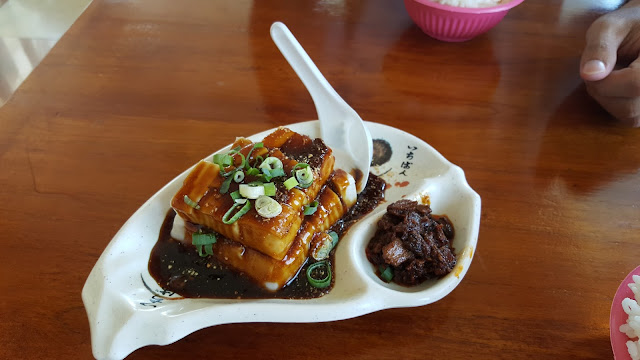At the morning of second day on Green Island, my brother and I went for snorkeling. This is the second times I snorkeled, the last times was 9 years ago at Redang Island. Compared with the snorkeling at Redang, it is required to wear diving suit and boots here. The snorkeling area was just at sea shore, so we walked into the sea directly. In Redang, we need to take ferry to an area further away from the Island for snorkeling.
The snorkeling was quite nice. The fishes were so colorful. One of them was so special with its long tip at its head. The coach let us to feed those fishes with bread. Those fishes just hurried to our surroundings once the bread drop into sea. They moved so fast till I couldn't see them clearly. However, it must be careful to feed them as their teeth were quite sharp. My brother's finger was hurt when feeding them. For the corals, it isn't pretty as what I imagined.
After lunch, we started to explore each interesting sites on the island. Due to the overwhelming number of sites, two posts will be used to describe these places. The first one is about the Green Island under White Terror, while the second one is about the natural scenery of the island.
Green Island is one of the offshore islands at east side of Taiwan. It was used as prisons to imprison political inmates during the reign of Martial Law (1974 - 1987). During this 38 years of rule by White Terror, two political prisons were set up in this island. The first one was the New Life Correction Center (1951 - 1965), operated by the Taiwan Security Command, while the second prison was the Ministry of National Defense Green Island Reform and Reeducation Prison (1972 - 1987), also known as Oasis Villa.
 |
| Oasis Villa Rock, behind was Elephant's Trunk Rock, or known as "Devil's Gate" by the prisoners during the period of New Life Correction Center. There was a checkpoint set between these two rocks. The prisoners must pass the checkpoint first before entering the area of New Life Correction Center. Since there was almost no hope to be released, the prisoners treated the checkpoint as a gate to death. |





















